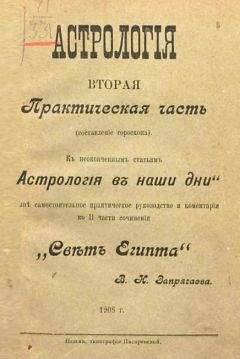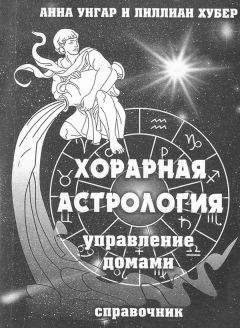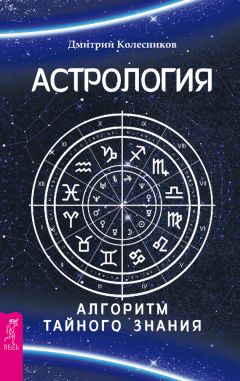Амир Ацель - Почему наука не отрицает существование Бога? О науке, хаосе и пределах человеческого знания
В 2009 году я ездил в Иерусалим, где мне довелось взять интервью у одного из самых выдающихся космологов современности Якоба Бекенштейна из Еврейского университета. В 70-е годы, учась в Принстоне у прославленного физика Джона Уилера, именно Бекенштейн, вычислив энтропию черной дыры, первым показал, что черные дыры имеют ненулевую абсолютную температуру. Стивен Хокинг тогда посмеялся над этим открытием, и Бекенштейн стал объектом множества шуток. Однако математические выкладки его оказались верными, а позднее и Хокинг, после того как провел подобные вычисления, взял обратно свои слова. С тех пор результат этих вычислений называют законом излучения черных дыр Бекенштейна – Хокинга. Выяснилось, что Бекенштейн, помимо всего прочего, глубоко верующий человек, придерживающийся норм ортодоксального иудаизма. При этом ученый не находит никакого противоречия между работой на передовых рубежах науки и своим религиозными убеждениями. Итак, вопреки Докинзу, на свете существуют выдающиеся ученые, являющиеся одновременно традиционно верующими людьми.
Этой книгой я, конечно, не доказал существование Бога, и очевидно, что это не было моей целью. Я лишь хотел убедительно показать, что наука не опровергает бытие Бога. Поскольку мы не знаем, что такое Бог, и у нас нет способов постичь бесконечную мощь, пространство, время, любовь, мудрость и другие глубинные понятия, которые мы связываем с Богом, постольку мы лишены всякой, даже потенциальной надежды когда-либо ответить на эти вопросы. Бог буквальных толкований Священного Писания, созданного тысячи лет назад для примитивно мыслящих людей, определенно не существует. Мало того, как и все человеческие институты, религия, естественно, имеет свои недостатки и пороки. Но Бог в виде силы, превосходящей нашу способность ее постичь, создавшей Вселенную, которую мы видим вокруг себя, может существовать, и наука не опровергает это в настоящем и не опровергнет в будущем.
В основе науки и духовности в равной степени заложено стремление к познанию мира и места человека в нем. И наука, и религия являются попытками осветить тайны нашего мира и увидеть что-то за его пределами – нечто целое, частью которого он является. Очертив историю науки, я, надеюсь, смог показать, насколько она важна и велика. На протяжении всей истории человечества научные открытия приближали нас к чудесам жизни и Вселенной и неизмеримо углубили представления человека о творении. С помощью науки мы реально познаем мир, она облагораживает людей и будит в них самые лучшие чувства. Но в поисках истины нет места фанатизму и нетерпимости. Наука не должна проявлять авторитарность в тех областях, где сама она стоит на зыбкой почве. Мы должны сделать все, чтобы те, кто призывает науку всуе, не могли унизить и дискредитировать ее.
Библиография
A Strange Wilderness: The Lives of the Great Mathematicians. N. Y.: Sterling, 2012.
About Time: Einstein’s Unfinished Revolution. N. Y.: Simon and Schuster, 1995.
Aczel Amir D. God’s Equation: Einstein, Relativity, and the Expanding Universe. N. Y.: Basic Books, 1999.
Arsuaga Juan Luis. The Neanderthal’s Necklace: In Search of the First Thinkers. Translated by Andy Klatt. N. Y.: Four Walls Eight Windows, 2002.
Barrow John D. Pi in the Sky: Counting, Thinking, and Being. N. Y.: Little, Brown, 1992.
Bell Eric Temple. Men of Mathematics. N. Y.: Simon and Schuster, 1937.
Bell John S. Speakable and Unspeakable in Quantum Mechanics. N. Y.: Cambridge University Press, 1993.
Berra Tim M. Evolution and the Myth of Creationism. Stanford, CA: Stanford University Press, 1990.
Boaz Noel T., Russell L. Ciochon. Dragon Bone Hill: An Ice-Age Saga of Homo Erectus. N. Y. Oxford University Press, 2004.
Bohm David. Causality and Chance in Modern Physics. Foreword by Louis de Broglie. Philadelphia: University of Pennsylvania Press, 1957.
Bonola Roberto. Non-Euclidean Geometry. N. Y.: Dover, 1955.
Born Max. Einstein’s Theory of Relativity. N. Y.: Dover, 1962.
Boslough John. Beyond the Black Hole: Stephen Hawking’s Universe. Glasgow, UK: Fontana/Collins, 1984.
Box George E. P., Tiao George C. Bayesian Inference in Statistical Analysis. Reading, MA: Addison-Wesley, 1973.
Boyer Carl, Merzbach Uta. A History of Mathematics. Second Edition. N. Y.: Wiley, 1993.
Calaprice Alice. Dear Professor Einstein: Albert Einstein’s Letters to and from Children. N. Y.: Prometheus, 2002.
Carroll James. Constantine’s Sword: The Church and the Jews – A History. N. Y.: Mariner, 2001.
Cauvin Jacques. Naissance des divinités, naissance de l’agriculture. Paris: Flammarion, 1997.
Charraud Nathalie. Infini et inconscient: Essai sur Georg Cantor. Paris: Anthropos, 1994.
Ciufolini Ignazio, Wheeler John Archibald. Gravitation and Inertia. Prince ton, NJ: Princeton University Press, 1995.
Clark Ronald W. Einstein: The Life and Times. N. Y.: Avon, 1972.
Close Frank. The Infinity Puzzle. N. Y.: Basic Books, 2011.
Cohen Claudine. La femme des origines: Images de la femme dans la préhistoire occidentale. Paris: Belin-Herscher, 2003.
Cole K. C. The Universe and the Teacup: The Mathematics of Truth and Beauty. N. Y.: Harcourt Brace, 1998.
Collins Francis S. The Language of God: A Scientist Presents Evidence for Belief. N. Y.: Free Press, 2007.
Croswell Ken. Planet Quest: The Epic Discovery of Alien Solar Systems. N. Y.: Free Press, 1997.
d’Espagnat Bernard. On Physics and Philosophy. Prince ton, NJ: Prince ton University Press, 2006.
Darwin Charles. On the Origin of Species. N. Y.: Barnes and Noble, 2004 (reprint of the 1859 edition).
Darwin’s Dangerous Idea. N. Y.: Simon and Schuster, 1995.
David F. N. Games, Gods, and Gambling: A History of Probability and Statistical Ideas. N. Y.: Dover, 1998.
Davies Paul. The Mind of God. N. Y.: Simon and Schuster, 1991.
Dawkins Richard. The God Delusion. N. Y.: Houghton Mifflin Harcourt, 2006.
Dawson John W., Jr. Logical Dilemmas: The Life and Work of Kurt Gödel. Wellesley, MA: A. K. Peters, 1997.
Dayagi-Mendels M., S. Rozenberg, eds. Chronicles of the Land: Archaeology in the Israel Museum. Jerusalem: The Israel Museum, 2011.
De Beaune Sophie A. Les hommes au temps de Lascaux. Paris: Hachette, 1995.
De Botton Alain. Religion for Atheists: A Non-Believer’s Guide to the Uses of Religion. N. Y.: Pantheon, 2012.
Dennett Daniel. Consciousness Explained. N. Y.: Little, Brown, 1991.
Descartes René. Oeuvres philosophiques. Volume I: 1618–1637. Paris: Garnier, 1997.
Descartes’s Secret Notebook. N. Y.: Broadway, 2005.
Dirac Paul A. M. The Principles of Quantum Mechanics. Fourth Edition. N. Y.: Oxford University Press, 1958.
Einstein Albert, Lorentz A., Weil Hermann, Minkowski H. The Principle of Relativity. N. Y.: Dover, 1952.
Einstein Albert. Relativity: The Special and the General Theory. N. Y.: Crown, 1961.
Entanglement: The Greatest Mystery in Physics. N. Y.: Basic Books, 2002.
Ever Since Darwin: Reflections in Natural History. N. Y.: Norton, 1992.
Ferguson Kitty. Stephen Hawking: An Unfettered Mind. N. Y.: Palgrave/Macmillan, 2012.
Feynman Richard P. QED: The Strange Theory of Light and Matter. Princeton, NJ: Princeton University Press, 1985.
Fölsing Albrecht. Albert Einstein. N. Y.: Penguin, 1998.
Frank Philipp. Einstein: His Life and Times. Translated by George Rosen. N. Y.: Da Capo, 1989.
Freeman Charles. A.D. 381: Heretics, Pagans, and the Dawn of the Monotheistic State. N. Y.: Overlook, 2008.
French A. P., Taylor Edwin F. An Introduction to Quantum Physics. N. Y.: Norton, 1978.
Freund Jürgen. Special Relativity for Beginners. Singapore: World Scientific, 2008.
Gapaillard Jacques. Et pourtant elle tourne!: Le mouvement de la Terre. Paris: Seuil, 1993.
Geroch Robert. Mathematical Physics. Chicago, IL: The University of Chicago Press, 1985.
Gilmore Robert. Lie Groups, Lie Algebras, and Some of Their Applications. N. Y.: Dover, 2002.
Gingerich Owen. The Book Nobody Read: Chasing the Revolutions of Nicolaus Copernicus. N. Y.: Walker, 2004.
God Is Not Great: How Religion Poisons Everything. N. Y.: Twelve, 2009.
Gödel Kurt. Collected Works. Volume II, Publications 1938–1974. Edited by Solomon Feferman, et al. N. Y.: Oxford University Press, 1990.
Goldsmith Donald. Einstein’s Greatest Blunder? The Cosmological Constant and Other Fudge Factors in the Physics of the Universe. Cambridge, MA: Harvard University Press, 1995.
Gondhalekar Prabhakar. The Grip of Gravity: The Quest to Understand the Laws of Motion and Gravitation. N. Y.: Cambridge University Press, 2001.
Gould Stephen Jay. The Structure of Evolutionary Theory. Cambridge, MA: Belknap Harvard, 2002.
Greene Brian. The Fabric of the Cosmos: Space, Time, and the Texture of Reality. N. Y.: Knopf, 2003.
Guth Alan. The Inflationary Universe. N. Y.: Basic Books, 1998.
Hacking Ian. The Emergence of Probability: A Philosophical Study of Early Ideas about Probability, Induction, and Statistical Inference. Second Edition. N. Y.: Cambridge University Press, 2006.
Hajnal András, Hamburger Peter. Set Theory. N. Y.: Cambridge University Press, 1999.
Harris Sam. The End of Faith: Religion, Terror, and the Future of Reason. N. Y.: Norton, 2004.
Hawking Stephen, Ellis G. F. R. The Large Scale Structure of Space-Time. N. Y.: Cambridge University Press, 1973.
Hawking Stephen, Mlodinow Leonard. The Grand Design. N. Y.: Bantam, 2010.
Hawking Stephen. The Illustrated A Brief History of Time and The Universe in a Nutshell. N. Y.: Bantam, 2001.
Heilbron J. L. The Sun in the Church: Cathedrals as Solar Observatories. Cambridge, MA: Harvard University Press, 1999.
Heisenberg Werner. Ordnung der Wirklichkeit. Munich: R. Piper, 1989.
Hitchens Christopher. The Portable Atheist. N. Y.: Perseus, 2007.
Holton Gerald. Thematic Origins of Scientific Thought: Kepler to Einstein. Cambridge, MA: Harvard University Press, 1973.
Hooper Dan. Nature’s Blueprint: Supersymmetry and the Search for a Unified Theory of Matter and Force. N. Y.: HarperCollins, 2008.
Hoskin Michael, ed. The Cambridge Illustrated History of Astronomy. N. Y.: Cambridge University Press, 1997.
Huff Darrell. How to Lie with Statistics. N. Y.: Norton, 1954.
Isaacson Walter. Einstein: His Life and Universe. N. Y.: Simon and Schuster, 2008.
Jammer Max. Concepts of Force. Cambridge, MA: Harvard University Press, 1957. Reissued, N. Y.: Dover, 1999.
Jeffreys Harold. Theory of Probability. N. Y.: Oxford University Press, 1998 (reissue of 1939 edition).
Kaku Michio. Hyperspace: A Scientific Odyssey Through Parallel Universes, Time Warps, and the 10th Dimension. N. Y.: Oxford University Press, 1994.
Kandel Eric R. The Age of Insight: The Quest to Understand the Unconscious in Art, Mind, and Brain, from Vienna 1900 to the Present. N. Y.: Random House, 2012.
Kane Gordon, Aaron Pierce, eds. Perspectives on LHC Physics. Hackensack, NJ: World Scientific, 2008.
Kant Immanuel. Critique of Pure Reason. N. Y.: Dover, 2003.
Kautz Richard. Chaos: The Science of Predictable Random Motion. Oxford, UK: Oxford University Press, 2011.
Kelley John L. General Topology. N. Y.: Van Nostrand, 1955.
Kolata Gina. Clone: The Road to Dolly and the Path Ahead. N. Y.: Morrow, 1998.
Kosmann-Schwarzbach Yvette. The Noether Theorems: Invariance and Conservation Laws in the Twentieth Century. Translated by Bertram E. Schwarzbach. N. Y.: Springer, 2011.
Krauss Lawrence. A Universe from Nothing: Why There Is Something Rather than Nothing. N. Y.: Free Press, 2012.




